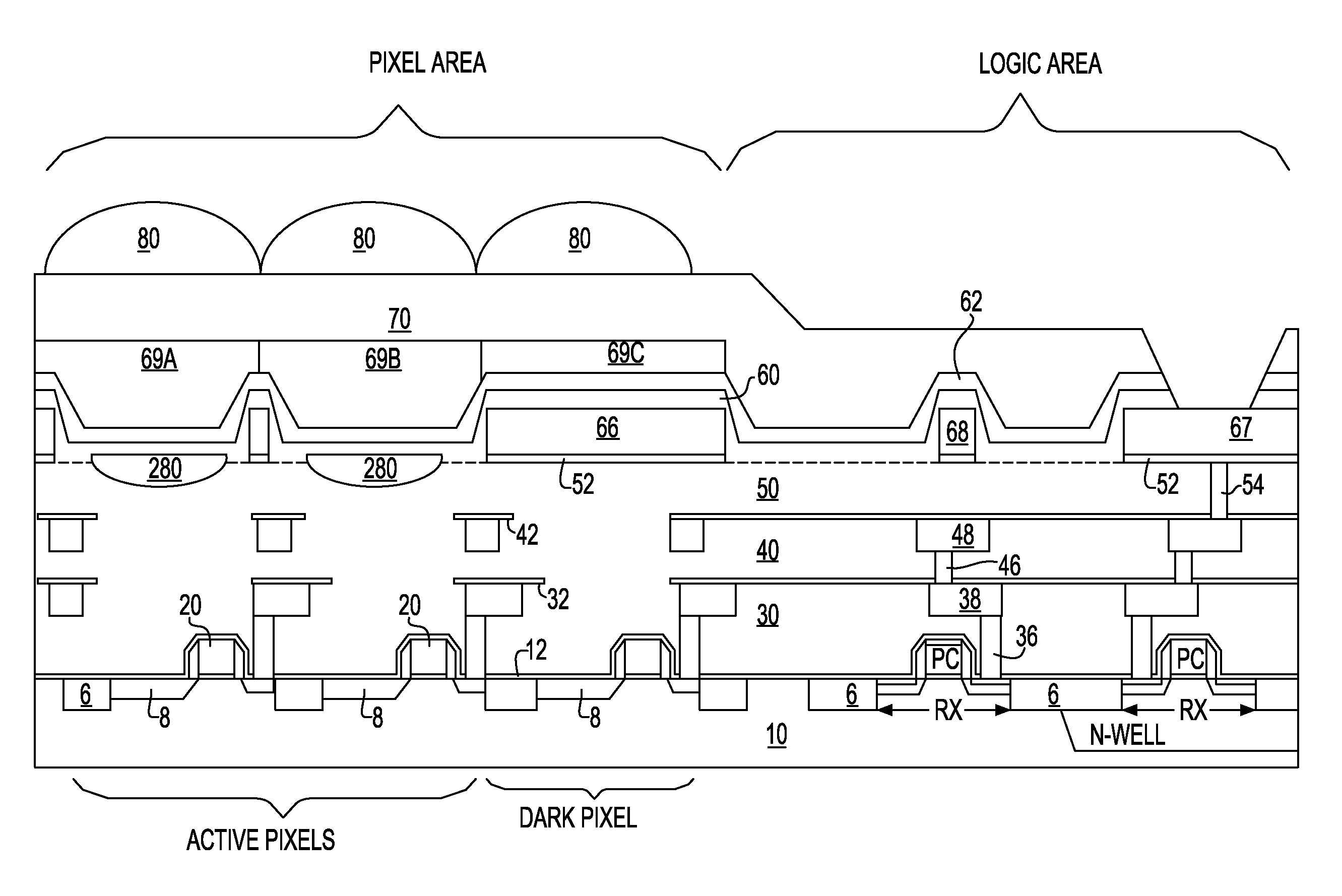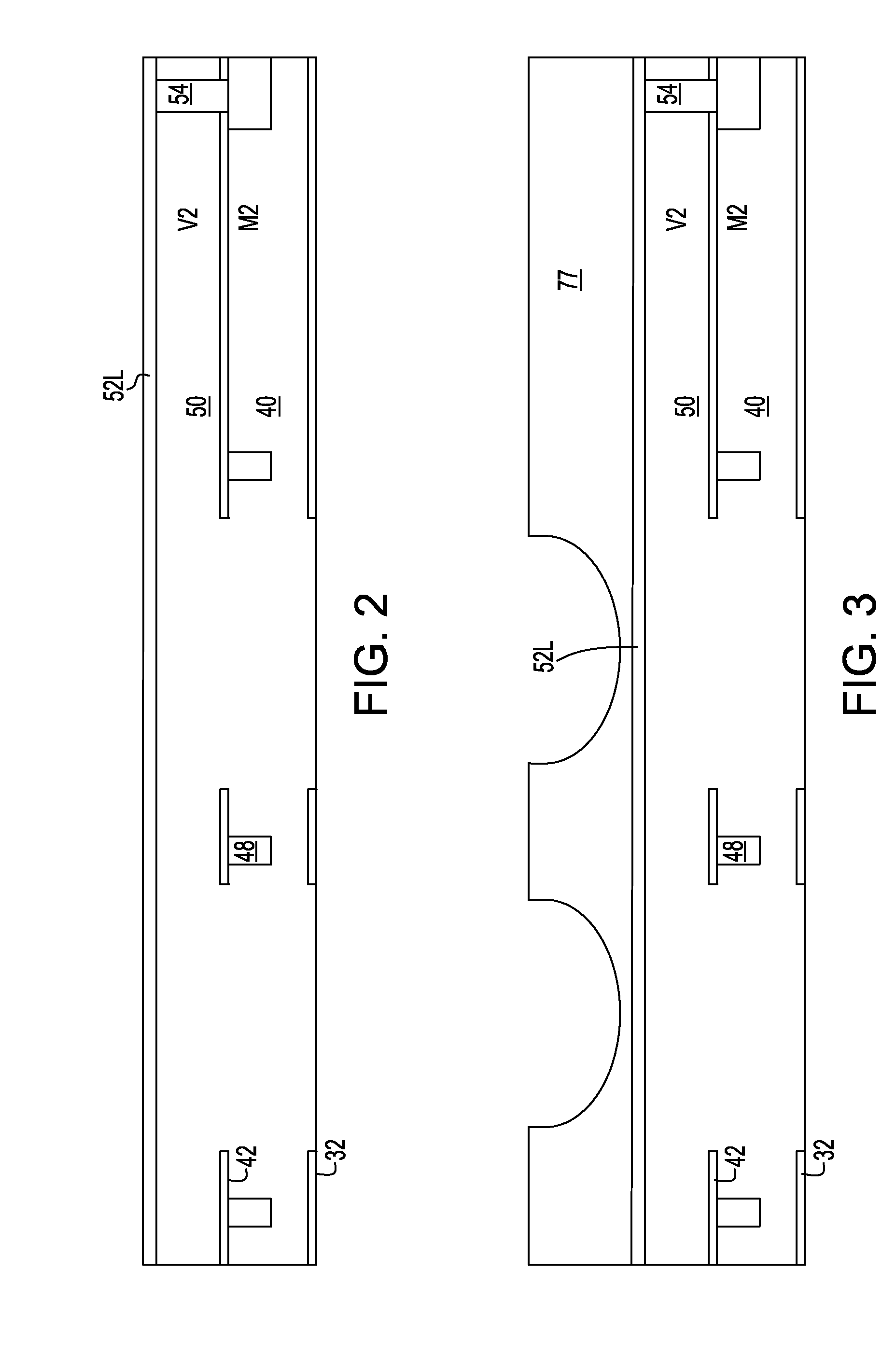Method of forming an inverted lens in a semiconductor structure
a semiconductor structure and inverted lens technology, applied in semiconductor/solid-state device manufacturing, semiconductor devices, electrical equipment, etc., can solve the problems of difficult integration of such a flat-top convex-bottom lens into a composite lens system containing another lens, and do not provide an ideal lens structure, so as to improve the light collection capacity and efficiency of a cmos image sensor unit.
- Summary
- Abstract
- Description
- Claims
- Application Information
AI Technical Summary
Benefits of technology
Problems solved by technology
Method used
Image
Examples
Embodiment Construction
[0060]As stated above, the present invention relates to a method of forming an inverted lens that may be advantageously employed in a complementary metal oxide semiconductor (CMOS) image sensor structure formed on a semiconductor substrate, and structures formed by the same, which are now described in detail with accompanying figures. It is noted that like and corresponding elements are referred to by like names or reference numerals in the figures.
[0061]FIG. 1 shows a vertical cross-sectional view of an exemplary CMOS image sensor unit cell comprising a semiconductor substrate 10, gate electrode structures 20, a contact array and first metal line (CA-M1) level dielectric layer 30, a second metal line (M2) level dielectric layer 40, a second via (V2) level dielectric layer 50, a third metal line (M3) level dielectric layer 60, and a dielectric passivation layer 70. The exemplary CMOS image sensor unit further comprises pixel area which contain one pixel of each type and a logic area...
PUM
 Login to View More
Login to View More Abstract
Description
Claims
Application Information
 Login to View More
Login to View More - R&D
- Intellectual Property
- Life Sciences
- Materials
- Tech Scout
- Unparalleled Data Quality
- Higher Quality Content
- 60% Fewer Hallucinations
Browse by: Latest US Patents, China's latest patents, Technical Efficacy Thesaurus, Application Domain, Technology Topic, Popular Technical Reports.
© 2025 PatSnap. All rights reserved.Legal|Privacy policy|Modern Slavery Act Transparency Statement|Sitemap|About US| Contact US: help@patsnap.com



